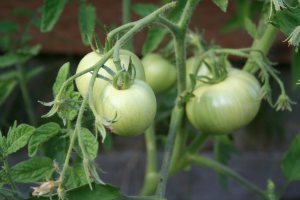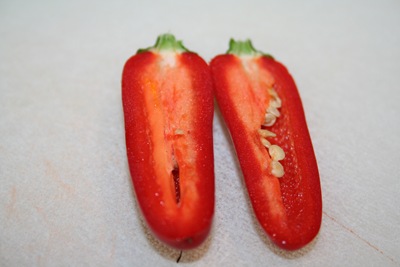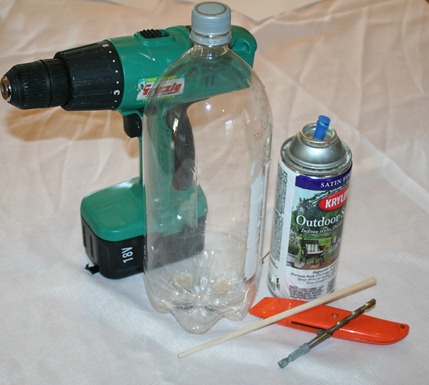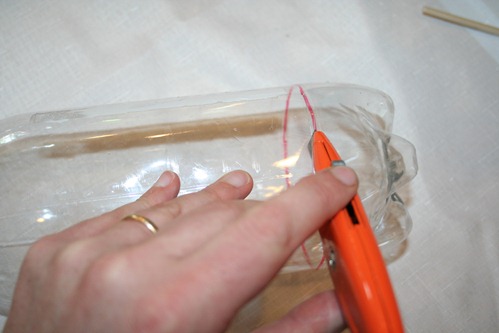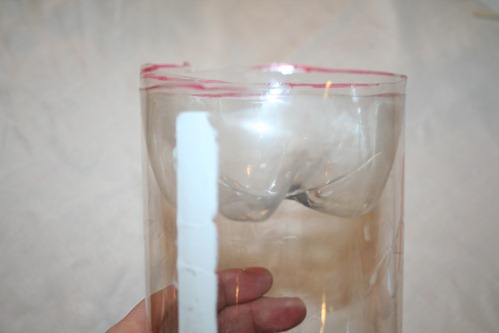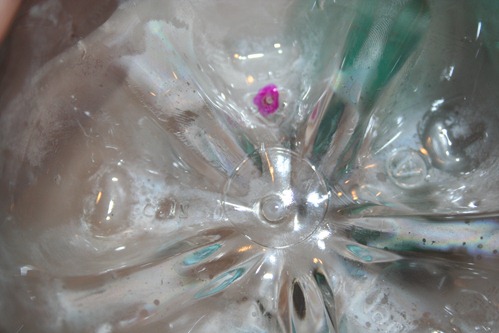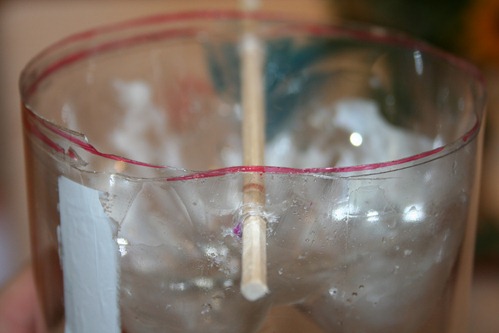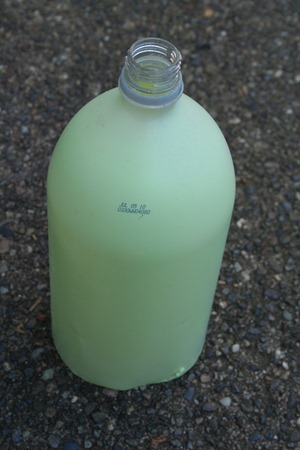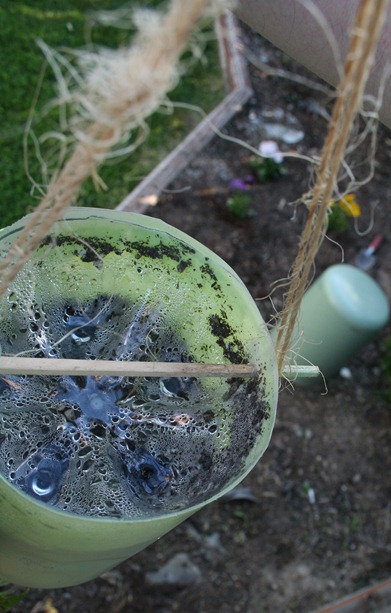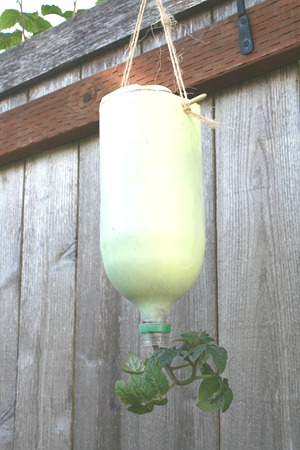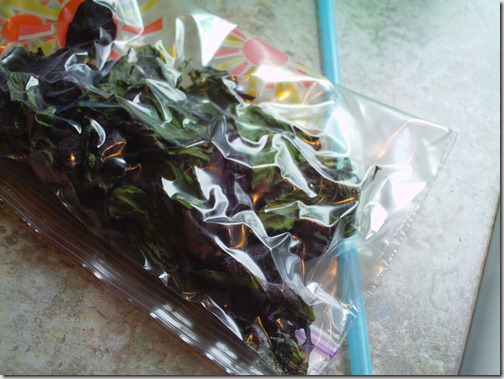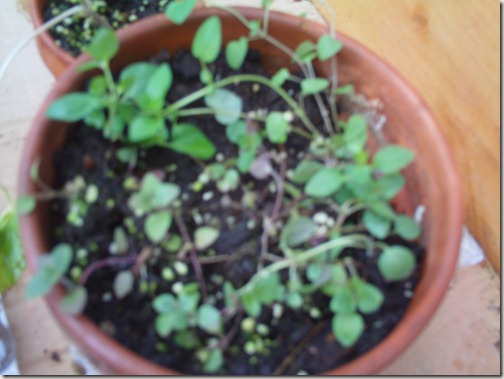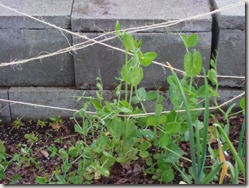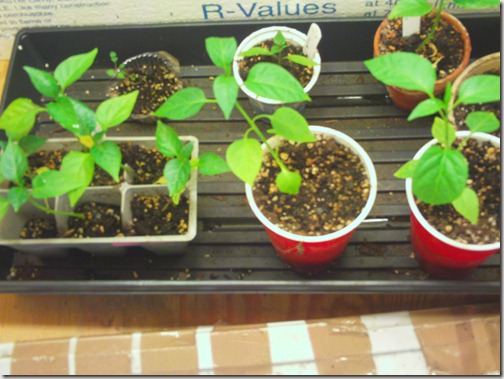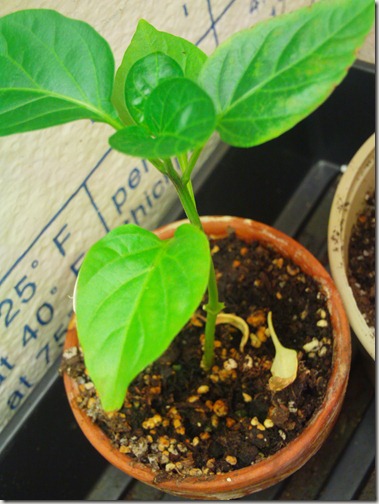How to make your tomatoes turn red?
9.7 years ago tomato
While going searching my logs I noticed the query in the topic. My first response, in my sarcastic mind was, “Uh red paint, maybe a red permanent marker?” After some more serious thought I did get some more helpful ideas.
Don’t be greedy: I know it is hard when you want to get as many delicious tomatoes as possible and you let your plants go wild producing as many fruit as possible but unfortunately you hit the end of your growing season with 70% of those tomatoes to never to become ripe before the first frost. You can prevent this by pinching off any suckers that are not part of the main vein of the plant. Sure you may not get as many fruits but your plant can spent more of its energy getting that fruit red instead of growing more green tomatoes to throw in the compost.
Be light on the nitrogen: Do not give your plants too much nitrogen during its growth period. You will get a big beautiful plant, but unfortunately fruit will bear too late in the season to mature into ripe red tomatoes.
Get supermarket quality tomatoes from your garden: Of course tomatoes ripened on the vine will have the better taste but when your season runs out and your tomatoes are still green what can you do? One option is to take any flawless tomatoes (no bruises, no cracks) place them very gently in a cardboard box padded on bottom with newspaper and place in a cool humid location. You may also add a ripe banana to speed up the process by adding a little extra ethylene. If you are luck in a couple/few weeks you should have some red tomatoes.
Just eat the green tomatoes: If all else fails there is always the option of breading them with some bread crumbs, salt, and pepper and fry up until golden. There is also the green salsa option which I am planning on trying out this year…ok I may have been a little “greedy” this year.
Tags: cheap, compost, outdoor plants, pepper plants, salsa garden, tomato plants, vegetables
How to save jalapeno seeds
9.7 years ago jalapeno, peppers, seed saving
I am attempting to grow the best pepper plants I can indoors (grow box) so I started with jalapeno peppers. They grow relatively small 2-3 feet and require 2-3 gallon container for growing. While this is fine for an outdoor garden, though indoors I can only sacrifice 1 gallon container. This summer I grew several jalapeno plants which spent half of their life in the grow box and spent our warm summer outdoors. All of the plants produced but there was definitely a clear winner which had incredible early yields even with its small growing quarters.
I used several immature peppers (green) for salsa this year but allowed several peppers to mature (red) which I will be saving the seeds for planting this winter and next summer for future plants. By hand selecting the best parent plants should be good old natural selection at work.
The process to collect pepper seeds is pretty simple though I must first provide this warning:
WARNING: Peppers are hot, especially the veins. When handling peppers use caution and wash your hands well with dish soap. Under no conditions do not rub your eyes or pick rub your nose before washing your hands or you will be regretting it for a couple hours. Using gloves is also recommended.
That being said slice the peppers lengthwise with a sharp knife.
Use a fork or spoon to gently dislodge the seeds into a small bowl.
If you are lucky enough to have hot sunny weather still (week of rain here) lay they out in the sun for a couple days and store them in a cool dry place until you are ready to plant them. If you are sun challenged like me set them on a windowsill for a few days.
As I have said before saving you own seeds is very easy and free and as an added bonus you can personally pick the best plant to be the donors of seeds for your future plantings. In my case I also have the benefit of a plants that is genetically grown to following my sporadic watering and care patterns.
Tags: garden seeds, growbox, outdoor plants, pepper plants, salsa garden
How to make your own upside Down Planter In your Garden
13.9 years ago garden planter, planter, upside down planter
Over the past year I have created a few different versions of garden planters for growing tomatoes, peppers, cucumbers inspired from my daughter watching a Topsy Turvy tomato planter commercial. Here is a quick summary of the different options which you can click the link for full instructions how to build on yourself.
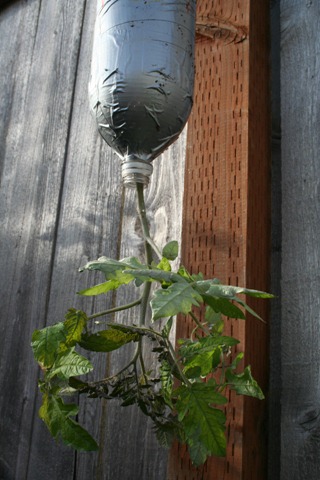 |
2 Liter – The Original — This is the one that started it all. Very simple design using a 2 liter bottle covered with duct tape with a hole cut in the side to add soil and water as needed.Pros: Simple to create, dark color helped keep soil warm during the early part of the year, unlike the sibling seedling which I planted in the ground as a control which did not make it.Cons: Really had to keep up on watering, given it had a 2 inch hole in the side water was able to easily evaporate and it did not get the advantage of being watered automatically on raining days/weeks and given I wasn’t watering any other plants forgot about this poor one which led to reduced yields. |
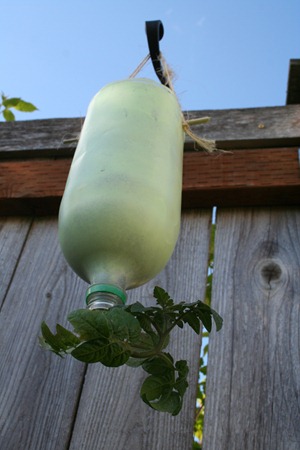 |
2 liter — Version 2.0 — This year I wanted something that did not appear as hideous hanging and also took care of the watering issue from the previous version. With this I created a slow drip watering reservoir and used spray paint and skipped the duct tape.Pros: Easy to water through manual or automatic (rain), evaporation is minimized due to small drainage holesCons: At the moment, there are none known. I am happy with this design. |
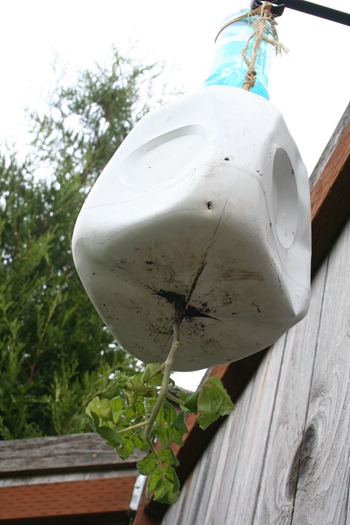 |
1 gallon milk jug (with auto-watering) — I was curious about if the extra 1.799 liters with a larger contain would significantly help yields so I went with this version. Also decided to add an experimental external watering source.Pros: Larger volume of soil, extra watering capacityCons: Keeping the whole thing balanced was a pain, currently have it under control with a couple rubber band but will probably have to be replaced with something more permanent later. |
So there you have the short evolution of my homemade upside down tomato planters all created from materials from my recycling bin. Though if you do not want to make one yourself here are a just a few of the commercial upside down planter versions on the market right now.
Tags: cheap, garden seeds, led, outdoor plants, pepper plants, tomato plants, upside down tomato planter, vegetables
2-liter bottle upside down tomato planter
14 years ago cheap, peppers, tomato, upside down planter
Though my first attempt at an upside down tomato planter worked out great, I have a habit of forgetting to water the plants everyday. More commonly when we have decent rains when only the hanging tomato planters need to be watered. So this year I have modified my design a little to make this a little easier. As a bonus you can create this new version much quicker and minimal tools.
Materials required
- Empty 2-liter bottle
- Spray paint
- Drill or hot nail
- Chopstick or 1/4 in stick
Step 1 — Cut off bottom
There is a natural ridge at the bottom of the two liter bottle, simply cut at this ridge and remove the bottom.
Step 2 — Attach water reservoir
Take the removed bottom, flip it over, and insert it into the bottom of the bottle until flush with the top.
Step 3 — Drills Holes
First you need to drill a small hole in the bottom of the reservoir (the bottom you cut of) Use the smallest drill bit you have, this will reduce the water flow coming into the planter during rainfall and/or manual watering. With this reduced flow there should be much less soil loss during watering.
Second you need to drill two holes about 1/4 inch from the edge with a 1/4 inch drill bit. It is a little difficult to get enough pressure against the plastic to make this hole without causing the plastic to collapse. To take care of this place a small piece of wood on the floor and drill the holes from the inside.
Step 4 — Paint planter
You want to protect the roots from being exposed to direct sunlight so you need to cover the outside. This can be done with contact paper, duct tape (as I have done in the past) or for a fast cleaner look just quickly add a quick coat of spray paint to the outside. It is probably best to use paint that is made to adheres well to plastic, though in my case I had some nice multipurpose light green paint leftover from another project that with a few hard rains appears to be holding up well.
Step 5 — Secure with stick (chopstick) and fill with soil
Now add your plant (tomatoes and peppers are my favorites) to the bottom (previously the top) of the planter by carefully pushing the roots through the hole or alternatively you can the plant out from the inside. If your plant is too large to do this safely you may also cut a larger opening in the bottom, but I would recommend wrapping a sponge or coffee filter around the plant to assist in keeping the dirt in the planter.
Fill your planter with a mixture of 1 part perlite to 2 parts (potting mix, peat moss, coconut coir) with the top 1/2 inch being only (potting mix, peat moss, coconut coir) After a couple of waterings, this 1/2 inch layer will compact and restrict the water flow for a slower and more distributed watering.
Use the thinner end of your chopsticks to thread it through both holes and both sets of plastic, attach a piece of twine attached to bother ends, and hang wherever the plants can get some good full sunshine and you should have plenty of early tomatoes this summer.
Tags: cheap, coffee grounds, outdoor plants, pepper plants, tomato plants, upside down tomato planter, vegetables
Drying peppermint leaves
14 years ago dehydrator, herbs, peppermint
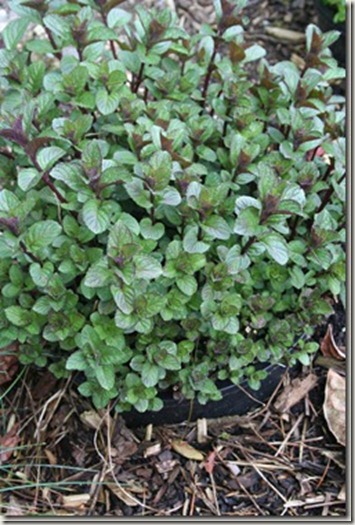
Excited to try out my new to me food dehydrator, I collected some peppermint leaves from my 2 year old peppermint plants which is fighting the confirms of the 1 gallon pot I have used to keep it from consuming my entire flowerbed, lawn, house, etc.
For the best potency, it is best to collect mint right before they start to flower and first thing in the morning when their oils are at their peak. Given it is a couple months before they will be flowering I picked them in the early afternoon.
If they were dirty you should wash them off and pat them dry with a paper towel and add directly to your dehydrator. In my case we had a rain the night before and they were very clean so I skipped the washing step.
Next I simply put them into the dehydrator at 100F degree and in a few hours later they were all crumbly and looked like what you see below.
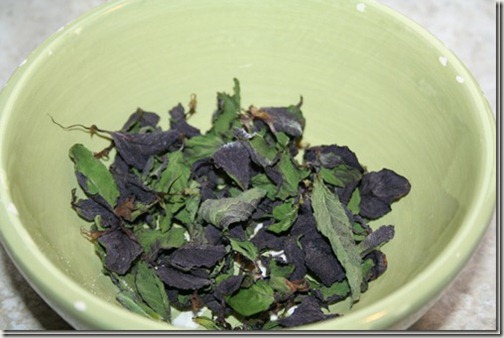
To store the leaves I went with the poor man’s vacuum packing technique…Ziploc bag and sucking the air out with a straw which should keep the herbs fresh for a few months.
Lastly I tried out the product by taking a pinch of the leaves and quickly breaking them up with my fingers and added them to a tea strainer.
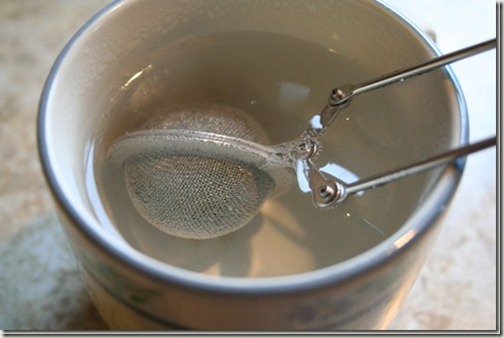
After a few minutes of steeping I had some good looking and tasting peppermint tea.
I would say my testing of my new dehydrator was a success…now off to see what else in the fridge I can dry out.
Tags: cheap, garden seeds, herb garden, outdoor plants, pepper plants, peppermint plant, vegetables
Earth Day in the garden
14 years ago cilantro, cold season crops, garlic bulbs, onions, peppers, tomato
I decided to take the day off to catch up on some things at home and as I ended up outside of course I went right to the garden.
We have seen a few warm days here in the Northwest and in my area we haven’t dipped under 40 degrees at night so seemed like a good time to plant a few of my tomatoes spending their time this winter in the grow box.
Above are a New Yorker and Persey both of which are new for me this year. They have been growing great even with my neglect during their youth. I also have some Green Zebras, Husky Cherry, Sweetie Cherry, and Yellow Cherry. I did attempt Red Brandywine but the seeds I got appear to be duds.
Given it is always good to have a Plan B so I have twins of these tomato plants still in puts which I can bring if a cold snap comes and kills off the plants I ambitiously planted in the ground.
Elsewhere in the garden I have some herbs: Parsley and Oregano, with Basil being an unfortunately casualty which I will plan on buying from the store and try again next year.
Next I checked out my larger garden bed to see my peas, cilantro, onions, carrots, lettuce, strawberries and garlic
Lastly I checked out the peppers in the grow box which they will stay until we have some warmer nights (at least 50 degrees) otherwise can cause significant stunting of growth. So until then they will remain happy in the grow box and given they are still pretty small, still plenty of room to grow…
Tags: cheap, cilantro, garden seeds, garlic bulbs, growbox, herb garden, outdoor plants, pepper plants, strawberry plants, tomato plants, vegetables
